You are using an out of date browser. It may not display this or other websites correctly.
You should upgrade or use an alternative browser.
You should upgrade or use an alternative browser.
Which solder/flux combination do you use for etched kit construction?
- Thread starter Mike Trice
- Start date
Richard Gawler
Western Thunderer
Thanks for this Mick. I have found a Safety Data Sheet for the Pearsons Safety Solder Flux, and the active ingredient is zinc chloride. I feel happier seeing this manufacturer makes their SDS easy to find, and then knowing what is inside the bottle. I can buy a bottle and try it out.
Chas Levin
Western Thunderer
I'd vote for phosphoric too, I use the Gaugemaster ones but whichever brand is easier to obtain. I believe the WM version is usually about 6%, brass/NS 12%. It works extremely well - I always think of Iain Rice's phrase about using "lashings of flux" - and is easy to wash away afterwards.
Here's a useful guide to soldering techniques that includes a list of recommended solder and flux combinations. The fluxes mentioned are all Carr's products, but you can look up the relevant SDS to establish the active ingredients suitable for each application.
The Carr's Green Flux SDS show that it's a Zinc Chloride flux, so it's likely a close match for the Pearsons product.
Soldering Techniques | CLFinescale
The Carr's Green Flux SDS show that it's a Zinc Chloride flux, so it's likely a close match for the Pearsons product.
Soldering Techniques | CLFinescale
Whist there have been many posts on solder and flux the question of holding parts in the correct configuration to solder is missing.
I made this simple universal jig to hold your parts. It consists of a raised platform with a vertical piece along one side, the swivelling top piece can move to any angle and can be placed at any point for particular needs. The reason for raising the platform is to allow clamps to hold parts.
I thing you will find it an asset in loco construction.
Mike
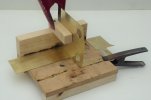
I made this simple universal jig to hold your parts. It consists of a raised platform with a vertical piece along one side, the swivelling top piece can move to any angle and can be placed at any point for particular needs. The reason for raising the platform is to allow clamps to hold parts.
I thing you will find it an asset in loco construction.
Mike

Richard Gawler
Western Thunderer
Going back to the flux for a moment. Wishing for a simple life, I am happy to have two sorts - one for mild steel and one for everything else. I do wonder if the provisioning of phosporic acid at 6, 9 and 12% concentrations is a triumph of marketing over metalurgy; but until yesterday my choice was Fry's Powerflow and Barry Stevenson's 9% phosphoric acid.
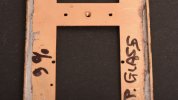
I have bought a bottle of Person's Glass Safety Flux and tried to do a reasonably fair trial with this. Two valance strips soldered up with the same 40W iron, 188 degree solder and only the flux varied from one strip to the other. I think, the Pearson's Glass one is thinner, flows more easily and makes less splatter. So this will be my flux of choice for brass, and with a 200ml bottle it should last me for years. I realise the photo isn't terribly conclusive but it was worth a try.

I have bought a bottle of Person's Glass Safety Flux and tried to do a reasonably fair trial with this. Two valance strips soldered up with the same 40W iron, 188 degree solder and only the flux varied from one strip to the other. I think, the Pearson's Glass one is thinner, flows more easily and makes less splatter. So this will be my flux of choice for brass, and with a 200ml bottle it should last me for years. I realise the photo isn't terribly conclusive but it was worth a try.
Chas Levin
Western Thunderer
Not sure where Richard off the top of my head, but I've read of reasons for the 6%/12% white-metal/brass flux difference. Am I understanding correctly though that you use 9% for WM and brass/NS?
Last edited:
Richard Gawler
Western Thunderer
Yes. I have used 9% phosphoric acid for all permutations of brass and whitemetal, and also brass to nickel silver. So far I haven't wanted to fix nickel silver to whitemetal. Clean up with Viakal and then a water rinse.
OzzyO
Western Thunderer
Going back to Baker's fluid, I use it for brass to brass, brass to n/s, steel to steel, steel to brass & n/s (give these a good clean asap as the steel will do a good impression of Slater's steel), white metal to white metal, white metal to brass or n/s.
So that is my one flux for all jobs. As with all fluxes wash the job as much as you want to I use Cillit Bang the one with the orang top. Acid to aciddust to dust
ATB
OzzyO.
So that is my one flux for all jobs. As with all fluxes wash the job as much as you want to I use Cillit Bang the one with the orang top. Acid to acid
ATB
OzzyO.
Last edited:
Chas Levin
Western Thunderer
Reading this discussion and also remembering others on similar lines, it seems to me that what they show is that quite a wide variety of tools can be used perfectly successfully for the same tasks and there isn't necessarily a right or wrong! Which is a pleasant change in a world where so many people are clamouring for certainty...
oldravendale
Western Thunderer
I'll add my two pen'orth which , I suspect, won't be much help to anybody, but (as I bought a lifetime's supply) I use Safety Flux which was available from a company with a name like 7mm on line or similar. I'm not certain it's still available from comments on here. However, I use it for everything and it works for me.
Brian
Brian
Mick LNER
Western Thunderer
At least two years, since it stopped trading.unfortunately due to illness i believe, 7mm is no more
Ken
oldravendale
Western Thunderer
IMHO that's a great shame.
Brian
Brian
Richard Gawler
Western Thunderer
I should make one of these. I survive with endless temporary jigs. The fixture needs to be non-metallic to stop excess heat loss but maybe a ceramic tile would work as the base? Or perhaps, consumable sheets of thin MDF.Whist there have been many posts on solder and flux the question of holding parts in the correct configuration to solder is missing.
I made this simple universal jig to hold your parts. It consists of a raised platform with a vertical piece along one side, the swivelling top piece can move to any angle and can be placed at any point for particular needs. The reason for raising the platform is to allow clamps to hold parts.
I thing you will find it an asset in loco construction.
Mike
View attachment 197344
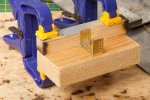
In this one, the vertical piece is skewered with a scriber and pressed downwards with one hand while the other hand holds the iron.
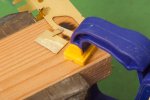
Using the torch saves tinning the outside of the work but I do incinerate quite a lot of 2 x 1.
I took these pics for my workbench thread but decided they didn't really fit. We could probably have a whole topic on ways of holding things for soldering.
Chas Levin
Western Thunderer
A good heat resistant substance is Tufnol or Paxolin, which doesn't act as a heatsink either and you can get cut to pretty much any size - search for 'Tufnol sheet' on Ebay. There seem to be various substitutes for it that come up too - phenolic, SRBF - and I don't know whether they're as suitable for this purpose.
Also, those soldering bases sold for use by jewellery makers. Some are made of a sort of white and slightly powdering substance which I've tried before and found the powdery feel offputting, but there seem to be others available now (e.g. vermiculite or ceramic) that don't exhibit that powderiness - an ebay search under 'Jewellery soldering board' brings up some interesting looking options.
I'm going to have a look later to see if anyone makes them in shapes other than a plain flat block, for instance a block but with right-angle walls round one or two sides...
Also, those soldering bases sold for use by jewellery makers. Some are made of a sort of white and slightly powdering substance which I've tried before and found the powdery feel offputting, but there seem to be others available now (e.g. vermiculite or ceramic) that don't exhibit that powderiness - an ebay search under 'Jewellery soldering board' brings up some interesting looking options.
I'm going to have a look later to see if anyone makes them in shapes other than a plain flat block, for instance a block but with right-angle walls round one or two sides...
Paul Cheffings
Active Member
Hi
I use one of these with the available stainless pins. I did turn some pins of my own that didn’t taper as I found some of my 2mm scale parts were too small to hold vertically with the tapered ones.
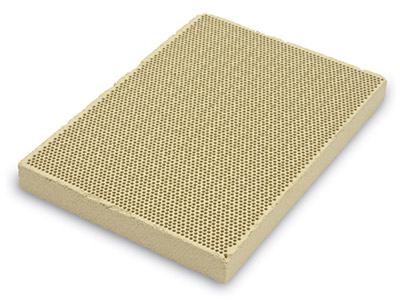
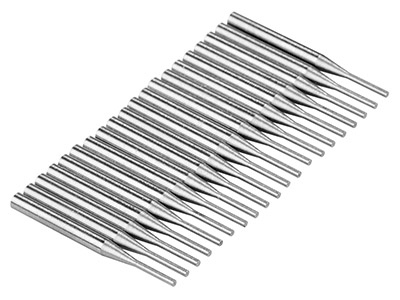
Cheers
Paul
I use one of these with the available stainless pins. I did turn some pins of my own that didn’t taper as I found some of my 2mm scale parts were too small to hold vertically with the tapered ones.

Honeycomb Soldering Board Small 135mm X 95mm X 12mm
Made from a ceramic material and used as a surface on which to solder - a good heat reflector and long lasting. This honeycomb board .. - Product Code : 999 972 , Price : 11.53 GBP
www.cooksongold.com

Metal Pins Pack of 20
This pack of twenty metal pins is designed for use with our round honeycomb soldering boards 999 9730 999 9731. The metal pins are in.. - Product Code : 999 973B , Price : 2.55 GBP
www.cooksongold.com
Cheers
Paul
simond
Western Thunderer
I had a couple of chunks of marble tiles left over from doing the bathroom a few years back. I found that TC drills will drill this stuff nicely, and it makes an excellent soldering/silver soldering base. I have also made clips by bending some piano wire to a bit more than 90 degrees. They will hold stuff down very well, when the short leg is pushed into the hole, and the long leg sits on top of whatever you’re holding.
